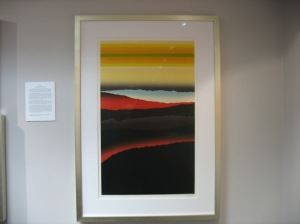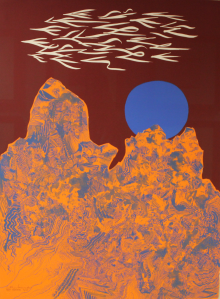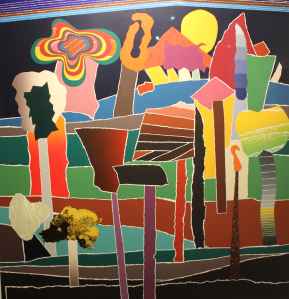Collagraphy refers to a printing technique in which proofs are pulled from a block on which the artwork or design is built up like a collage, creating a relief.
Lithography is a printing technique that uses a planographic process in which prints are pulled on a special press from a flat stone or metal surface that has been chemically sensitized so that ink sticks only to the design areas, and is repelled by the non-image areas. Lithography was invented in 1798 in Solnhofen, Germany by Alois Senefelder. The early history of lithography is dominated by great French artists such as Daumier and Delacroix, and later by Degas, Toulouse-Lautrec, Picasso, Braque, and Miro.
Serigraphy (silkscreen) can be described as a printing technique that makes use of a squeegee to force ink directly into a piece of paper or canvas through a stencil creating an image on a screen or silk or other fine fabric with an impermeable substance. Serigraphy differs from most other printing in that its color areas are paint films rather than printing-ink stains.



